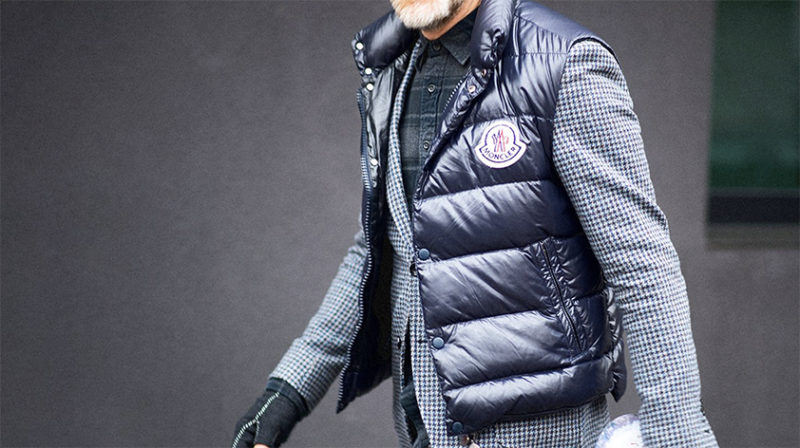
What is a gilet?
In today’s terms a gilet (also known as a bodywarmer, waistcoat – or a vest in the US) commonly refers to a simply structured, straight-sided, sleeveless jacket primarily worn for extra warmth on nippy days. Usually waist-length and either woollen, fleecy, quilted or padded, gilets are the essential, go-to layering piece to accompany you throughout the seasons.
Where does the word ‘gilet’ come from?
The word gilet derives from the Spanish jileco or chaleco, but originates from the Turkish word yelek. However other records suggest it comes from the French noun – le gilet – meaning cardigan.
How do you pronounce gilet?
…and so to gilet pronunciation. Is it Jee-lay? Jee-let? Gill-lay? Having sourced various English dictionaries, the consensus suggests making the ‘g’ as soft as possible – “Jee-lay” If you can do this with an authentic French accent, then all the better!
Who typically wears a gilet?

Although the gilet at one time had the unfashionable reputation for being the uninspired choice of gardeners, outdoor trekky types and middle-aged men in the countryside, its persistence as a uniquely versatile and wonderfully practical item, has made it the sartorial problem solver and one that all men, regardless of age, occupation or interests now embrace.
Why are gilets so popular?
A gilet’s popularity stems from its unique ability to do things no other garment can. Not only is it fabulously functional in creating a very wearable, extra layer, but it can be added or subtracted from an outfit with infinite ease. The fact it has no sleeves allows the arms to do whatever they want!
Some research suggests a close-fitting gilet can help promote efficient blood circulation, by generating heat at the core of the body and warming the vital organs ie. heart and the lungs.
It’s the perfect piece for between-the-season, what-to-wear weather dilemmas and is usually light enough to roll up and pack into a briefcase or rucksack too, making it a much loved travelling companion.
What is the difference between a gilet, a body warmer – and a waistcoat?
The word ‘gilet’ is frequently used interchangeably with ‘body warmer’, but technically these two garments are significantly different. Although they are similar in shape and style, a body warmer is primarily an outer garment, padded and therefore more insulating. A traditional gilet is usually more lightweight in design and can comfortably be worn beneath a jacket or coat as a middle layer.
Interestingly the ‘waistcoat’ derives from the same fashion family tree, with all three terms describing a sleeveless, upper body garment that fastens at the front, is waist-length and covers the torso. However a waistcoat is perceived as the third part of a suit or decorative apparel and rarely associated with functionality or warmth.
The different types of gilet
The huge variety of gilets available on the market today means there’s a style for everyone:
- Quilted or padded gilets
- Fleece gilets
- Technical, utility or sports gilets
- Game wax gilets
- Leather gilets
- Costume gilets
- Fashion gilets
Quilted or padded gilets
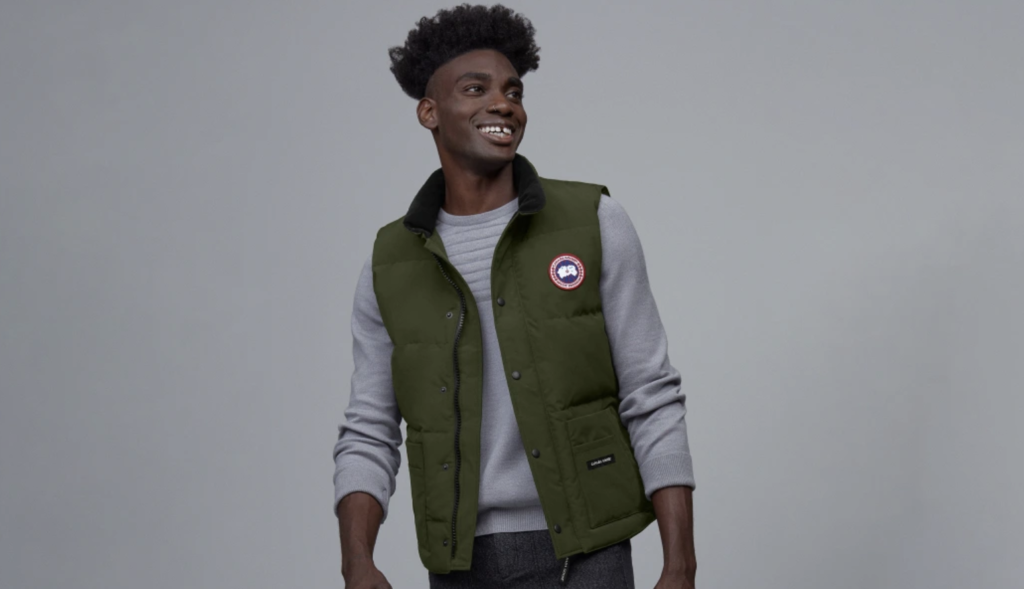
A quilted gilet (or body warmer) usually refers to an outer garment that features pockets of insulation – duck down, synthetic fibres or a mix of both – held in pockets by visible outer stitching. Air is trapped in the padding ensuring body heat remains inside the jacket.
Years ago padded jackets created a Michelin Man silhouette, however these days, insulated jackets are much more sophisticated, with varying levels of insulation, from the thickest needed for an Arctic expedition to the modest warmth of a daily layering system.
Fleece gilets

Fleece fabric is created from polyester and is a super soft, breathable, synthetic product named after the fleece coat of a sheep. The fluffy pile surface traps pockets of air between the threads, making the material hold in that bit more warmth. A fleece gilet is both light and slim and works well as both an outer layer and a mid-layer worn underneath a jacket or a coat. Some fleece gilets are designed to be zipped into a walking/hiking jacket to function perfectly as a mid-layer.
A technical, utility or sports gilet
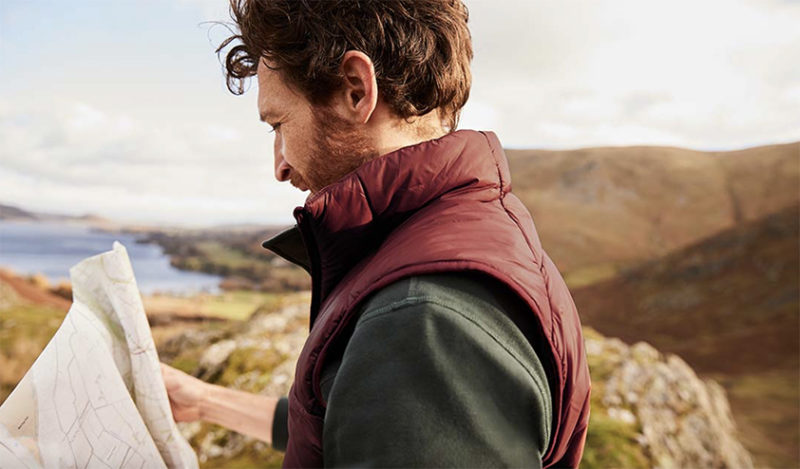
A technical gilet refers to anything that was made for a specific purpose such as a : sport or hobby, for example shooting, hunting, fishing or skiing. The fabrics are usually extremely durable, wind and waterproof and the garment has additional features not found on other gilets, including deep open pockets for easy access to bait, cartridges or a hip flask.
Game wax gilet

Taking its design cues from the iconic Barbour-style country jacket, these windproof gilets are crafted in 100% wax cotton, lined with a traditional, country check and frequently feature a corduroy collar trim. A popular choice for those who participate in field sports or country pursuits.
Costume gilet

Traditionally worn by male ballet dancers this garment closely resembles the ornateness of the original gilets worn centuries ago. Braid, beads and elegant top-stitching are used to embellish the gilets to maximum effect. The biggest change in the gilet may well be its name, as these stage performance pieces are now more frequently referred to as ‘vests’.
Brands that make gilets
From the famous fashion houses and sportswear giants through to the outdoor pursuit companies and high street fashion retailers, it seems the market is rich with every permutation of a gilet possible, each brand offering something different.
Whilst some focus solely on function and practicality, others seek to create high fashion garments purely intent on looking superb.
Recognised gilet retailers include Barbour, Belstaff, Canada Goose, Ellis Brigham, Moncler, Blacks, North Face, Oliver Spencer, Patagonia, Purdey, Rab, Schoffel and Uniqulo.
How to wear a gilet
Team with tailoring: Dress down the formality of traditional tailoring by wearing a slim fit gilet underneath a jacket or blazer – something Italian men do with effortless ease. The addition of a light-weight layer instantly softens a typically stiff ensemble, giving it a more relaxed, more contemporary vibe.
Slip under a coat: The slim-line styling of a gilet makes it a useful layering item with other items of outerwear too. Pop under a classic Crombie, a parka, a denim jacket or a mac to create a warming layer. It’s also a very easy way to throw a bit of contrast colour and texture into an outfit mix.
Pop over casual wear: During milder weather wear a gilet over a warm shirt, crew neck sweater or sweatshirt instead of a bulky coat. Opting for a neutral colour – navy, grey, black, khaki or stone – in a plain fabric or knit, will ensure it works well with everything in your wardrobe.
The history of the humble gilet
Born out of function, the origin of the gilet can be traced back to 15th Century France and the word ‘jerkin’ – a sleeveless jacket often made of leather. These were pieces of clothing were worn by peasants in the tilled fields of Europe to keep the wearer warm while still giving them the freedom to move their arms unimpeded as they worked.
During the 16th Century the jerkin was elevated to the ranks of the aristocracy and it seems Henry VIII was instrumental in this garment’s popularity amongst royalty and the rich. During his reign, a padded, decorative version evolved, a precursor to the more modern take on the bodywarmer we know today. The jerkin was fastened over a decorated doublet (a close fitting-fitting bodysuit) and worn with hose.
By the 18th Century a more feminine and elegant version of the gilet was embraced by women too, who wore them quilted in silk over the bodices of their hooped dresses.
Throughout the 19th Century the gilet morphed into an elaborate dress garment often fashioned from velvet, silk or a heavy brocade. Decorated in exquisite embroidery, it layered over a shirt or full sleeved ‘chemise’ and was worn under a jacket that was longer in length. These sleeveless, collarless versions did not feature pockets, making the fit much smoother and tighter to the body.
1908 saw the introduction of Barbour’s legendary wax cotton jackets. It wasn’t until approximately 7 decades later, their quilted gilets followed, although a similar style had already evolved amongst the the landed gentry for their country pursuits, namely hunting, shooting and fishing – activities that required freedom of movement whilst maintaining body warmth.
During the First World War, a protective, gilet-style garment came about, covered with metal plates to protect those going into battle. This was similar in function to the chain-mail tunics worn in Medieval times and the protective, sleeveless fencing jackets of old.
In conclusion, the earliest gilets were wholly functional, before their grand transformation into a luxurious fashion pieces worn by kings. Today the gilet straddles both fashion and function. Having reverted back to its practical roots as an insulated layer to provide extra warmth, it is also enjoying life as a fashion phenomenon, worn purely to add interest to a street style outfit.
Interestingly, regardless of its purpose, the gilet has maintained the same basic shape throughout the ensuing decades. The only thing that has really changed is its length and the material from which they are made.
Who are the gilet jaunes?

The 21st Century
Now we know the history of the gilet, it’s fascinating to see how this garment has evolved in latter years.
From a functionality and performance perspective, advancements in the production of ‘technical’ fabrics have enabled the creation of lighter weight gilets with improved durability, increased breathability etc. – proving practicality and functionality are still at the core of this item’s intrinsic make up.
During the nineties, after a long time standing on the outside of what would generally be considered stylish, the scorned gilet/bodywarmer was embraced by hip-hoppers (think All Saints etc.) as activewear and styled with slouch-fitting combat pants.
Alongside the traditional materials such as wool, fleece and corduroy, gilets are now available in a multitude of eye-catching fashion-forward fabrics – metallics, two-tone, fluorescents etc. Reversible versions are proving popular too.
Cleverly Wrapped’s Cashmere Mix Gilet
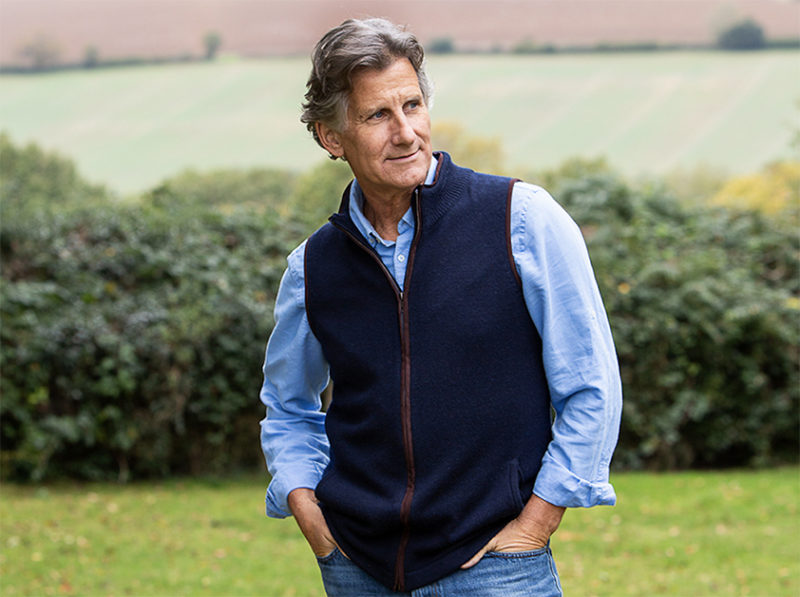
Alongside the gilet’s already redeeming features, our version is made from a cashmere wool blend (70% lambswool/30% cashmere) and features a washable suede trim in chocolate brown. Available in 4 colours – Olive,Sky Blue, Navy and Purple – there are two side pockets, a Nehru-style collar and not a fancy logo to be seen. Other companies are selling very similar products for £260 or thereabouts and ours is £160. I am not a big company and as I don’t want to wholesale, it’s possible for me to apply lesser mark-up than some of the bigger brands, making my version extremely competitive.
As a wife and a mother to two boys I know buying presents for men is no walk in the park. A quality present that’s straight forward to size (S, M/L, XL), affordable, understated, easy to wear, stylish and functional, is also pivotal to my gilet’s success too. Over Christmas I even had some customers buying gilets for all three generations of their family!
However gilets are not just for Christmas. They’re a keeper and here to stay. Hence my decision to develop this garment and take it to new heights. Keep watching this space!
If you’ve any ideas on how to improve on our design and develop it further, I’m all ears! Meanwhile let me share with you one final image of the silver fox in our latest men’s gilet, in a colour designed to take the CW man through the spring, summer and beyond!
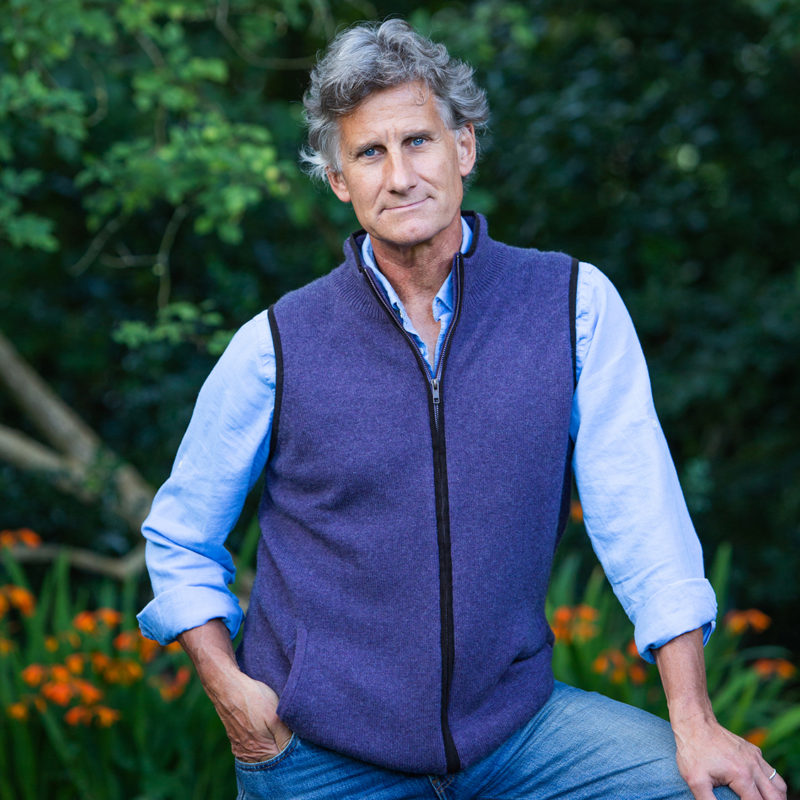
Cleverly Wrapped Purple Cashmere Gilet photo courtesy of Justine Kirby Photography.
References
- https://blog.joules.com/post/how-to-wear-the-gilet/
- https://blog.coes.co.uk/what-is-a-gilet-a-guide-to-body-warmers/
- https://www.mrporter.com/en-dk/journal/fashion/guide-how-to-wear-style-gilet-1411864
- https://www.thread.com/gb/tips/men/coats-jackets/how-gilet-should-fit/
- https://www.esquire.com/uk/style/news/a7184/style-debate-is-it-ever-ok-to-wear-a-gilet/
- https://www.wise-geek.com/what-is-a-gilet.htm
- https://uknews.orvis.co.uk/gilet-versus-waistcoat-whats-difference/
